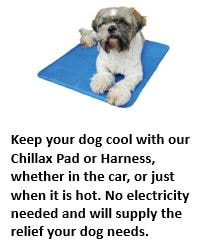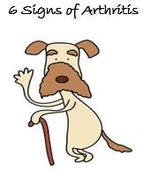Preventing and recognising Heatstroke in Dogs
By Scotty Valadao – Accredited Animal Behaviourist (Canine) (ABC of SA™)
As with all situations, prevention is better than cure, especially with a condition like Heat Stroke which can happen quickly and be fatal. As our dogs walk around with a fur coat on it is logical that they will feel the heat more, and be more likely to develop heatstroke. The thicker and denser the coat, the more they will be susceptible. Dogs which are over weight will be at higher risk as well as those dogs bred for the colder climates. Certain breeds such as bulldogs and pugs are in a high risk bracket due to the structure of their face; they can’t pant as efficiently as other breeds. Panting is the main method dogs use to deal with excess heat.
Avoid, at all costs, leaving your dog in a car, even for a few minutes. Accidents are just that, accidents, and if for some or other reason you are detained getting back to the car, your dog may well be in trouble by the time you get there. Even leaving the dog in a car in the shade is dangerous, simply because shade moves as the sun moves. The same thing can happen if you tie your dog up under a tree – shade moves.
Exercise
When it comes to exercising your dog, do so in the early morning or early evening – don’t over walk or over exercise in hot conditions, as this can quickly lead to heatstroke.
Travelling and Holiday
Heatstroke occurs more when a dog is confined, so pay special attention when your dog is travelling with you and ensure you always have plenty of water and a collapsible bowl, which is so easy to store. The inside of a car is much warmer than outside, especially if you do not have an air conditioner. If your dog is overheating you may find that it becomes restless due to anxiety, which can be dangerous for the occupants of the car as well as the dog. As not all dogs will drink water when travelling, stop about once an hour to let your dog drink and stretch its legs and cool down, unless overheating is observed, in which case stop immediately. If your dog does start panting excessively and looks anxious and uncomfortable, stop straight away to quench the thirst and cool the dog down. There is a product on the market call a ‘door sock’. As opposed to the old stick-on shade covers, this slips on over the door (like a sock) and allows you to keep the window open providing fresh air and shade.
|
Another great product is the Chillax Cool Pad, which requires no electricity as it recharges the pad as the dog moves around. If your dog measure 56cm from base of neck to the tail, then another option is the Chillax Harness, which has removable gel pads which will cool your dog down.
Another point to consider if you take your dog on holiday with you is the different climatic conditions. A walk in Johannesburg is not the same as a walk in Durban. There will be increased humidity and higher temperatures which may affect your dog. If you normally walk a few kilometres per day at home, on holiday cut the distance down initially, walk then it is cooler, and watch your dog for signs of distress. |
How do dogs sweat?
Dogs have the ability to sweat, but not the same as humans. Their skin and armpits don’t contain sweat glands as we humans have. They sweat through the pads on the feet, the anus and the tongue. As mentioned above, their main method of getting rid of excess heat is to pant.
Signs of Heatstroke
A dog’s normal temperature is between 38.2 – 39.2 degrees. When the temperature has risen to the 40 degree mark your dog is already suffering from moderate heat stroke and when the temperature rises above the 41.5 degree mark, the situation is very serious. Heatstroke can occur very quickly and must be dealt with immediately in order to save your dogs life. The easiest way to check a dog’s temperature is with a thermometer. Ask your vet to teach you to do this as well as discuss with him the use of products containing glucose, which assist with dehydration. After learning add the thermometer and glucose product to your car emergency kit.
The early signs of heatstroke include the following:-
Any signs of heatstroke must be treated as an absolute emergency and the dog must go to the vet immediately
What to do
What not to do
These points above may help you to save your dogs life, but as mentioned in the beginning, prevention is always better than cure and the more you know about your dog, the better educated your are.
Dogs have the ability to sweat, but not the same as humans. Their skin and armpits don’t contain sweat glands as we humans have. They sweat through the pads on the feet, the anus and the tongue. As mentioned above, their main method of getting rid of excess heat is to pant.
Signs of Heatstroke
A dog’s normal temperature is between 38.2 – 39.2 degrees. When the temperature has risen to the 40 degree mark your dog is already suffering from moderate heat stroke and when the temperature rises above the 41.5 degree mark, the situation is very serious. Heatstroke can occur very quickly and must be dealt with immediately in order to save your dogs life. The easiest way to check a dog’s temperature is with a thermometer. Ask your vet to teach you to do this as well as discuss with him the use of products containing glucose, which assist with dehydration. After learning add the thermometer and glucose product to your car emergency kit.
The early signs of heatstroke include the following:-
- Panting
- Rapid Heart Rate
- Increased Temperature
- The gums become either bright red or may turn pale and greyish.
- The dog may become disorientated and dizzy.
Any signs of heatstroke must be treated as an absolute emergency and the dog must go to the vet immediately
What to do
- Remain as calm as possible. If you stress, your dog is going to pick it up and become more anxious.
- Get your dog into the shade immediately.
- If at home, while you get the car ready, you can place your dog in the breeze from the fam.
- If you have access to a towel, soak this in luke warm water and apply to the underneath of the body - groin and armpits, as some of the major blood vessels are situated here. Take off on occasion to allow body to breathe. If your dog starts to shiver, remove the towel completely.
- Offer water but do not try to force your dog to drink, and rather small amounts at a time.
- If you know how to take your dogs temperature and checking the temperature every 4-5 minutes. When the temperature drops to 39.5 degrees, stop the cooling process as it can be dangerous to continue and can actually aggravate the condition. Let the vet know what the temperature was originally.
- Stroking the ears (from the base to the tip) as taught in Tellington TTouch, can help to calm your dog down and stop it from going into shock. If you do know TTouch, do some Lying Leopard Touches in the body as well.
- Get your dog to the vet asap - even if your dog seems fine, take him as a safeguard as he may be slightly dehydrated.
What not to do
- If you are out on a walk or run with your dog and see any signs of overheating, do not ask the dog to go further. Rather pick your dog up if possible and carry him home, or move him into the deep shade and phone somebody to come and pick you up and take you to the vet. Accidents do happen, so better to ensure you have your cell phone with you when out walking.
- Do not give ice - rather offer cool water. The jury is still out on the giving ice, with many vets disagreeing about it - rather offer cool water to be on the safe side. Additionally, if the water is too cold it will cause the blood vessels to constrict (vasoconstriction) and will stop the heat escaping from the body and as a result the core temperature of the body will keep on rising.
- Do not offer any medication - leave this for the vet to do if necessary.
- Remove your dog from the heat immediately. Be careful transporting your dog to the vet - open windows for cool air to circulate, put on your car fans, and put your dog on the side of the car where the sun is not shining - if you have window shade covers, use them.
- Never force your dog to drink water - this could result in water going into the lungs - offer water, but it is the dog's choice as to whether or not drunk.
- Do not immerse your dog in cold or cool water to cool down as this could work far too quickly, as above, and harm your dog further. Rather soak a towel in luke warm water and put under the tummy and armpits as mentioned above, and remove on occassion to allow the body to cool.
These points above may help you to save your dogs life, but as mentioned in the beginning, prevention is always better than cure and the more you know about your dog, the better educated your are.
|
The earlier you realize your dog has a degree of arthritis the better. We have supplied you with 6 common signs of this developing.
|
It’s no surprise that Breed Specific Legislation (BSL) is a hot topic right now. More people are realizing that banning a certain breed of dog – based entirely on physical traits – is inadequate and ineffective, to say the least.
|
Taking dogs on a holiday converts the event in to an expedition, with enormous responsibilities requiring vigilance, rather than a pleasurable break from everything.
|







